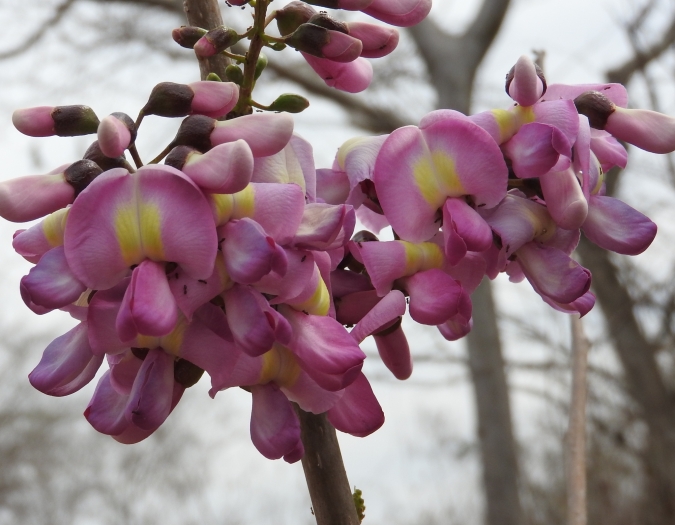Madre De Cacao
(Gliricidia sepium)
Madre De Cacao (Gliricidia sepium)
/
/

Francisco Farriols Sarabia
CC BY 4.0
Image By:
Francisco Farriols Sarabia
Recorded By:
Copyright:
CC BY 4.0
Copyright Notice:
Photo by: Francisco Farriols Sarabia | License Type: CC BY 4.0 | License URL: http://creativecommons.org/licenses/by/4.0/ | Rights Holder: Francisco Farriols Sarabia | Publisher: iNaturalist | Date Created: 2018-04-24T11:05-07:00 |






















Estimated Native Range
Summary
Gliricidia sepium, commonly known as Madre de Cacao or Quickstick, is a deciduous to semi-evergreen tree native to dry deciduous forests and the edges of rainforests in Mexico, Central America, and northern South America. It typically grows to a height of 33-39 feet (10-12 meters) and is recognized for its smooth, grey-brown bark and a spreading canopy. The tree produces showy, bright pink to lilac flowers with white and yellow spots, which bloom in clusters from late winter to early spring, attracting pollinators such as bees and butterflies.
Madre de Cacao is valued for its multiple uses in cultivation, including live fencing due to its rapid growth and ease of propagation from cuttings. It is also used as fodder for livestock, for firewood due to its fast growth, and as green manure because of its nitrogen-fixing abilities, which improve soil fertility. In tropical and subtropical gardens, it can serve as an ornamental shade tree or street tree. It requires full sun to part shade and does well in acidic to neutral soils with good drainage. While it is drought-tolerant once established, it benefits from regular watering during prolonged dry periods. It is important to be aware that Gliricidia sepium can become invasive outside its native range, so gardeners should consult local regulations before planting.CC BY-SA 4.0
Madre de Cacao is valued for its multiple uses in cultivation, including live fencing due to its rapid growth and ease of propagation from cuttings. It is also used as fodder for livestock, for firewood due to its fast growth, and as green manure because of its nitrogen-fixing abilities, which improve soil fertility. In tropical and subtropical gardens, it can serve as an ornamental shade tree or street tree. It requires full sun to part shade and does well in acidic to neutral soils with good drainage. While it is drought-tolerant once established, it benefits from regular watering during prolonged dry periods. It is important to be aware that Gliricidia sepium can become invasive outside its native range, so gardeners should consult local regulations before planting.CC BY-SA 4.0
Plant Description
- Plant Type: Shrub, Tree
- Height: 7-33 feet
- Width: 16-30 feet
- Growth Rate: Rapid
- Flower Color: Pink, White
- Flowering Season: Spring, Winter
- Leaf Retention: Deciduous, Semi-deciduous
Growth Requirements
- Sun: Full Sun, Part Shade
- Water: Medium
- Drainage: Fast, Medium, Slow
Common Uses
Bank Stabilization, Drought Tolerant, Erosion Control, Low Maintenance, Showy Flowers
Natural Habitat
Native to dry deciduous forests and the edges of rainforests in Mexico, Central America, and northern South America
Other Names
Common Names: Quickstick, Mexican Lilac, Mãe-Do-Cacau, Planta-Mãe-Do-Cacau, Mata Raton
Scientific Names: , Gliricidia sepium, Gliricidia lambii, Gliricidia maculata, Gliricidia maculata, Gliricidia maculata var. multijuga, Gliricidia maculata var. multijuga, Gliricidia sepium, Gliricidia sepium, Gliricidia sepium
GBIF Accepted Name: